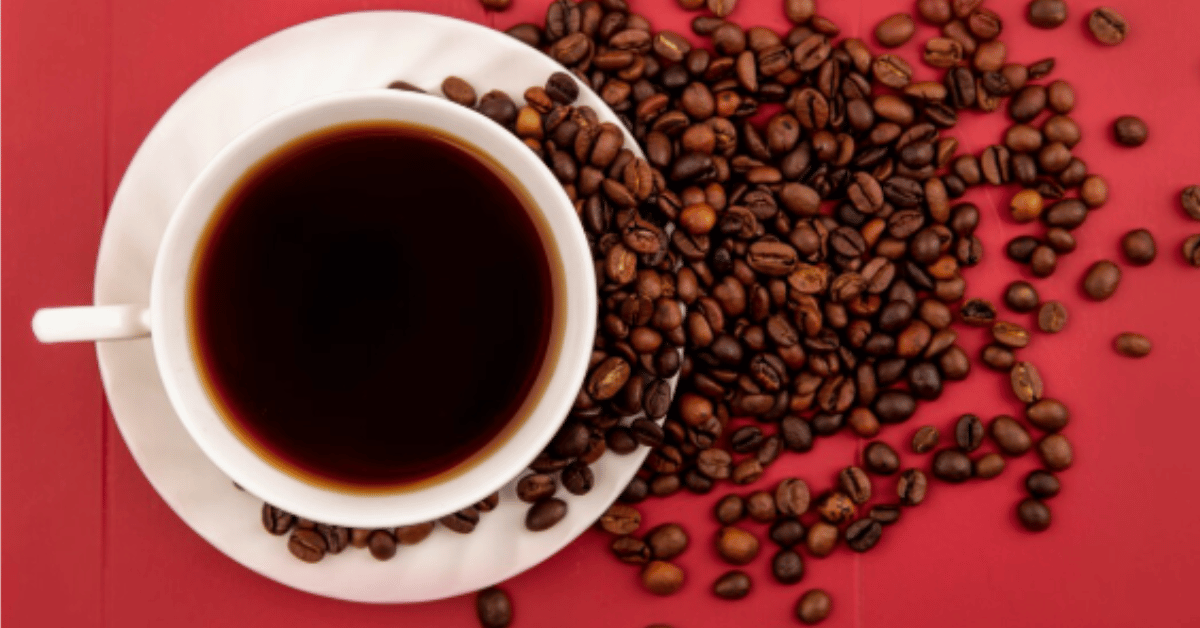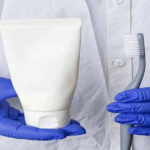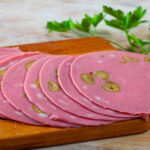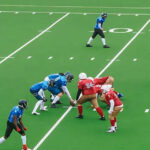Breve coffee is more than just a drink; it is an experience that blends richness, texture, and tradition. For those curious about what makes it unique, breve coffee is an espresso-based beverage prepared with steamed half-and-half instead of milk. This small adjustment creates a silky and velvety texture, providing drinkers with a creamier and slightly sweeter profile than a traditional latte or cappuccino. In the first sip, one notices that breve coffee is not about overpowering caffeine but about balancing flavors with a luxurious mouthfeel. The searcher’s intent when exploring “breve coffee” is usually to understand what it is, how it differs from other drinks, its cultural roots, health implications, and whether it is worth incorporating into daily routines. Within this guide, we will unpack its origins, brewing methods, nutritional aspects, and cultural significance while also providing comparisons and insights that elevate appreciation for this beloved specialty drink. As a quote from a modern barista goes, “Breve coffee is not about stronger caffeine; it’s about richer satisfaction.”
Origins of Breve Coffee
Breve coffee, often called “caffè breve,” traces its roots to Italian espresso culture but with a distinctly American adaptation. The use of half-and-half instead of milk reflects a preference for creamier and heavier textures, which gained popularity in the United States in the mid-20th century. Traditional Italian coffee emphasized balance and brevity, but American coffee culture embraced larger servings and richer dairy-based additions. This adjustment created a drink that resonated with consumers seeking indulgence without moving too far from the espresso foundation.
What makes breve coffee fascinating is that it developed organically as baristas experimented with dairy alternatives, seeking a way to give espresso a smoother edge. Unlike lattes or cappuccinos, which use varying ratios of milk and foam, the breve maintained consistency in texture due to the higher fat content of half-and-half. Over time, it became a staple in many cafés, particularly in regions where specialty coffee culture thrived.
Breve Coffee vs. Other Espresso Drinks
To fully appreciate breve coffee, it is important to compare it with other espresso-based beverages. The substitution of half-and-half instead of milk makes a considerable difference in both texture and flavor. While a latte offers a lighter, more milk-dominated flavor, the breve introduces a richer consistency that lingers on the palate. A cappuccino, on the other hand, emphasizes foam, offering a different tactile experience.
The following table outlines these distinctions:
| Drink Type | Base Ingredient | Texture & Mouthfeel | Flavor Notes | Typical Serving Size |
|---|---|---|---|---|
| Latte | Espresso + Milk | Smooth, lighter body | Balanced, mild | 8–12 oz |
| Cappuccino | Espresso + Milk Foam | Airy, frothy | Stronger espresso presence | 6–8 oz |
| Breve Coffee | Espresso + Half-and-Half | Creamy, velvety | Rich, slightly sweet | 6–10 oz |
As one coffee expert described it, “A breve is the velvet blanket of espresso drinks—denser, warmer, and more indulgent than its cousins.”
Preparation of Breve Coffee
Brewing breve coffee requires the same fundamental steps as preparing a latte or cappuccino, but with one essential modification: the steaming of half-and-half. The fat content demands precise handling, as overheating can cause separation. Baristas often steam the half-and-half to just under 150°F, ensuring the foam integrates smoothly with the espresso shot.
The espresso should be brewed with fresh, finely ground beans to balance the richness of the dairy. Generally, one or two shots form the base, followed by steamed half-and-half that is poured gently to create a uniform blend. A final layer of microfoam enhances both presentation and texture. Unlike flavored lattes, breve coffee rarely requires added syrups, though some enthusiasts enjoy hints of vanilla or hazelnut.
The artistry in making breve coffee lies in restraint—achieving a creamy profile without overwhelming the espresso’s natural depth. In well-prepared versions, the result is a drink where dairy enhances but does not mask the coffee.
Nutritional Profile and Health Considerations
While breve coffee is delicious, it is also significantly richer than other espresso-based drinks due to its reliance on half-and-half. This translates into higher calorie and fat content, making it an indulgence rather than an everyday beverage for some individuals. Still, moderate consumption can be part of a balanced lifestyle.
The nutritional breakdown of a standard 8-ounce breve coffee looks like this:
| Nutrient | Amount (Approx.) |
|---|---|
| Calories | 220–250 |
| Fat | 18–20g |
| Protein | 6–8g |
| Carbohydrates | 10–12g |
| Caffeine | 80–100mg (per shot) |
Because of these numbers, breve coffee appeals to those seeking a more decadent experience but may not be the best daily choice for calorie-conscious individuals. However, for those who appreciate occasional indulgence, breve offers satisfaction that smaller, lighter drinks often fail to deliver.
Cultural Significance of Breve Coffee
Coffee culture is never static, and breve coffee demonstrates how a single substitution can redefine a beverage’s cultural meaning. In the United States, breve coffee became emblematic of café indulgence during the rise of specialty coffeehouses in the 1980s and 1990s. Patrons sought drinks that went beyond basic drip coffee, and breve fit the bill as a richer, more luxurious option.
Cultural narratives around breve coffee often position it as a “comfort drink,” associated with leisurely mornings, book reading, or intimate conversations. Unlike fast espresso shots that embody speed and efficiency, breve coffee symbolizes slowing down and savoring. Its creamy nature aligns with moments of pause and reflection. As one café owner remarked, “When customers order a breve, they are not looking for caffeine alone—they are looking for comfort in a cup.”
Variations and Modern Adaptations
Though traditional breve coffee is straightforward, contemporary baristas have experimented with creative twists. Some add flavored syrups such as caramel or vanilla to enhance sweetness, while others incorporate plant-based half-and-half alternatives to cater to vegan and lactose-intolerant consumers.
Another emerging trend is the iced breve, where chilled espresso is combined with cold half-and-half and served over ice, creating a drink that maintains creaminess while refreshing in warmer climates. Flavored whipped creams, chocolate drizzles, or even spiced toppings like cinnamon are occasionally added for modern appeal.
The Science Behind Breve Coffee’s Texture
The magic of breve coffee is grounded in dairy chemistry. Half-and-half, by definition, is a mixture of equal parts whole milk and heavy cream. This balance introduces higher fat content than milk alone, creating a silkier consistency. When steamed, the fat globules in half-and-half envelop air bubbles, forming a denser foam that coats the tongue more thoroughly than milk foam. This sensation is what coffee drinkers describe as “velvety” or “luxurious.”
Baristas often explain that steaming half-and-half requires greater precision compared to milk. Milk proteins stabilize foam at higher temperatures, while creamier liquids risk separating if overheated. The sweet spot is maintaining a steady heat curve that allows microfoam to develop without curdling. The science here illustrates why breve coffee cannot be rushed—it demands patience and control. Those technical adjustments are part of what makes it a respected craft drink in specialty cafés.
Regional Popularity and Global Adaptation
Breve coffee’s popularity initially surged in American cafés, particularly in metropolitan areas where espresso culture blended with consumer demand for rich beverages. On the West Coast, where artisanal coffeehouses flourished, breve coffee became a menu staple alongside lattes, cappuccinos, and mochas.
Internationally, the drink has seen varied receptions. In Italy, where espresso purity reigns supreme, breve coffee remains a curiosity rather than a mainstream choice. In Northern Europe, where dairy-heavy traditions exist, it resonates more strongly. Meanwhile, in countries with emerging café cultures like South Korea or Australia, breve coffee appeals to younger audiences seeking novelty and indulgence.
This regional adaptability highlights how coffee drinks evolve when they cross cultural borders. Breve coffee demonstrates that even a simple ingredient change can shift how a beverage is embraced worldwide.
Breve Coffee and Café Economics
From a business perspective, breve coffee holds a unique place in café economics. It requires higher-cost ingredients, since half-and-half is pricier than milk and less common in bulk supply chains. Yet, customers are often willing to pay a premium for its perceived luxury. A café offering breve coffee can charge slightly more, positioning it as a specialty indulgence rather than an everyday staple.
In addition, the drink attracts a loyal subset of customers who prefer creamier options and often become repeat buyers. For small cafés, breve coffee can serve as a differentiator—a way to stand apart from chain competitors offering standardized lattes and cappuccinos. However, baristas note that it requires greater skill to prepare correctly, and mishandling half-and-half can lead to wasted product.
Thus, while not the most profitable beverage in terms of raw margins, breve coffee contributes to brand identity and customer loyalty, making it valuable in the broader café business model.
The Debate: Indulgence vs. Health Consciousness
In today’s wellness-focused culture, breve coffee sits at the center of a quiet debate. Supporters argue that its richness makes it more satisfying, reducing the desire for larger servings or additional sweeteners. Critics point to its higher fat and calorie content, suggesting moderation is essential.
Nutritionists often recommend breve coffee as an occasional treat rather than a daily ritual. The drink is more calorically dense than a latte or cappuccino, but it can fit into balanced diets if consumed thoughtfully. Some argue that its decadence encourages mindfulness, allowing people to savor one indulgent cup instead of mindlessly consuming multiple lighter beverages.
This tension between indulgence and health reflects a broader societal dialogue. Breve coffee symbolizes the struggle to balance pleasure with responsibility—a small but telling microcosm of modern food culture.
Breve Coffee at Home: Tips for Enthusiasts
For home brewers eager to replicate café-quality breve coffee, attention to technique is key. An espresso machine with a reliable steam wand is essential, as microwaving or boiling half-and-half leads to poor texture. Freshly ground espresso beans, ideally with a medium-to-dark roast profile, provide the necessary boldness to balance the richness of dairy.
A few practical tips include:
- Use chilled half-and-half to create stable foam.
- Steam slowly, keeping the pitcher angled to incorporate air evenly.
- Avoid overheating beyond 150°F to prevent curdling.
- Experiment with flavored syrups sparingly, as too much sweetness can overwhelm the natural balance.
Brewing at home allows enthusiasts to control ratios, experiment with flavors, and develop a personal relationship with the beverage. Many coffees lovers discover that breves coffee becomes a weekend ritual—something special that punctuates slower mornings.
Breve Coffee in Contemporary Culture
In recent years, breves coffee has appeared on social media feeds as part of the “comfort drink” aesthetic. Influencers often highlight its creamy texture in close-up videos, framing it as a luxury accessible within everyday life. Unlike flashy beverages with whipped cream towers, breves coffee retains elegance through simplicity.
Pop culture has also embraced the drink. It is frequently referenced in novels, TV shows, and lifestyle blogs as the choice of characters who prefer richness over speed. This reinforces its symbolic role as a drink for thoughtful indulgence.
“Coffee tells stories beyond the cup,” noted one cultural critic. “And breve coffee tells a story of slowing down in a hurried world.”
Sustainability and Dairy Alternatives
With the growing awareness of environmental impact, breves coffee has entered discussions about sustainability. Traditional half-and-half relies on dairy production, which carries ecological consequences such as water consumption and greenhouse gas emissions. To address this, several companies now produce plant-based half-and-half alternatives made from oats, almonds, or coconut.
While these substitutes do not perfectly replicate the richness of dairy, advancements in food technology are narrowing the gap. Some cafés now offer oat-based breve drinks, marketed to health-conscious and eco-conscious consumers. This adaptation demonstrates how the breve coffee tradition can evolve without abandoning its core appeal.
Breve Coffee in Comparison to Specialty Lattes
One way to understand breve coffee’s enduring relevance is by comparing it to modern specialty lattes, which dominate café menus. Lattes are often flavored with syrups, seasonal spices, or whipped toppings. Breve coffee, in contrast, offers richness without relying on external add-ins.
This distinction makes it appealing to purists who prefer simplicity. Where seasonal pumpkin-spice or lavender-honey lattes aim for novelty, breves coffee delivers timeless consistency. Its value lies not in trends but in texture. In a café landscape often cluttered with seasonal marketing, breve coffee stands as a quiet classic.
The Psychology of Creamy Beverages
Why do people gravitate toward creamier drinks like brevess coffee? Psychologists suggest that creaminess is linked to childhood associations with comfort foods such as milk, custard, and hot chocolate. The texture triggers feelings of warmth and security, making the drink emotionally rewarding beyond its flavor profile.
This psychological dimension explains why breve coffee has a reputation as a “comfort coffee.” It satisfies not just taste buds but emotional cravings. In stressful or uncertain times, creamy drinks can serve as small but meaningful anchors of comfort.
The Future of Breve Coffee
Looking ahead, breve coffee is likely to retain its niche appeal rather than becoming a mass-market staple. Its higher calorie profile may prevent it from achieving the ubiquity of lattes or cappuccinos, but its loyal following ensures it remains a fixture in specialty coffee culture.
As sustainability concerns grow, plant-based adaptations will likely expand its audience. Likewise, innovations in dairy science may create lighter versions that preserve texture while reducing fat content. Breve coffees will continue to evolve, proving that even simple drinks can adapt to changing times without losing identity.
Conclusion
Breve coffee’s more than a variation on espresso; it is a cultural symbol, a sensory experience, and a testament to coffee’s adaptability. From its creamy texture to its symbolic role in café culture, it represents indulgence balanced with craft. While its richness may limit daily consumption, its emotional and sensory rewards make it a beloved choice for many.
For the searcher seeking clarity: breve coffee’s an espresso drink prepared with half-and-half instead of milk, producing a thicker, creamier, and slightly sweeter flavor profile. Its origins lie in the fusion of Italian espresso culture and American preferences for richness. Whether enjoyed in a café, brewed at home, or explored through plant-based alternatives, it remains a drink that captures the timeless balance between indulgence and mindfulness.
FAQs
Q1: What makes breves coffee different from a latte?
A breve uses half-and-half instead of milk, creating a richer, creamier texture compared to the lighter latte.
Q2: Is breve coffee stronger in caffeine than other drinks?
No, its caffeine content depends on the espresso shot; the difference lies in the creaminess, not strength.
Q3: Can breve coffees be made with non-dairy alternatives?
Yes, oat, almond, or coconut half-and-half substitutes are available, though they differ in flavor and consistency.
Q4: Is breve coffee suitable for daily consumption?
It can be enjoyed daily, but due to higher calories and fat, moderation is often recommended.
Q5: How is iced breves coffee prepared?
Iced breve combines espresso with chilled half-and-half served over ice, offering creaminess with a refreshing twist.











